
Automating B2B referral marketing helps generate warm leads at scale by making it easy for customers to share and track referrals through email campaigns, landing pages, and CRM workflows.
But while many businesses rely on passive word-of-mouth, building structured, automated referral programs ensures consistency and measurable results.
The takeaway? B2B teams should treat referrals like any other growth channel—systematize them with tools and incentives to drive steady, qualified lead flow.
Referral marketing is the unicorn of B2B marketing. In simple terms, referral marketing is when you get your customers to tell their friends about you—making a B2B referral program an attractive option for many businesses.
It isn’t just for brick-and-mortar businesses. In the B2B space, 84% of decision-makers start their buying process with a referral. This is bad news if you don’t have a referral program in place—you’re pretty much leaving money on the table.
Implementing a B2B referral program can add a ton of additional revenue to your business (with minimal effort). Let’s dive into how you can build an automated referral machine for your B2B business.
🤖 Explore this content with AI:
“Hey, I’ll have what they’re having!”
We always trust what products or services our friends, peers, and colleagues recommend. And in the B2B world, it’s no different.
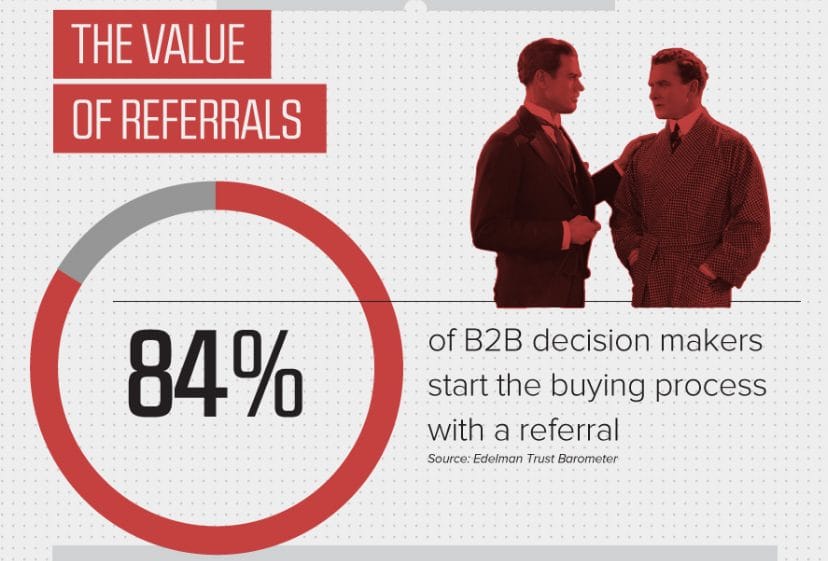
At its core, B2B referral marketing brings four key benefits to your business.
Referrals come from real-life, paying customers. They’re legit. And that’s why they hold so much weight with leads and prospects.
The numbers back this up. On average, 14% of visitors to a referral page will take action, which shows they’re intrigued about a product and what it’s all about.
Okay, so you’ll have to put in a bit of time to set up a referral system for your business. But once it’s all built, it’s basically like having someone handing out digital flyers for your business 24/7.
Once it’s up and running, the only overhead your company has is whatever you’re offering up as a referral reward. (More on that later.)
In B2B, many businesses and their employees know each other. If you’re offering up a referral reward to a current B2B customer, chances are, they know 10 companies just like theirs.
It’s like getting somebody to do your prospecting—for free. Can’t argue with that.
You’ve already got paying customers who love your product. Offering a referral rewards program can make them even happier.
It requires minimal effort on their end (a couple of emails, and they’re done), and they get a discount or reward to keep using a service they’re already using. It’s what we like to call a win-win.
Referral marketing is the digital world’s answer to word-of-mouth marketing. It gets your brand name out there. It allows prospects to test out your service. And it rewards your current customers. All at once.
If you strip it back, the nuts and bolts of referral marketing are super simple. It’s built on trust (from the referrer) that they aren’t recommending a dud. And because a referrer is likely to recommend your product to prospects who are more likely to sign up (because they want their reward!), the quality of your prospects instantly skyrockets.
But here’s the bad news. Only 30% of B2B organizations are actually asking for referrals from their customers. Are you one of them? Ouch. Let’s dive into how you can build your own successful B2B referral program.
The B2B Marketer’s Toolkit collects 120+ of the best lead generation tips ever published on the Nutshell blog. Download it today!

Okay, it’s a no-brainer as to why you should have a referral marketing program in place to drive revenue to your business.
Before you start, your business needs to be doing a few key things to make sure people will actually want to refer you in the first place.
You need to be:
Then, once your referral program is up and running, you need to be:
Ready? Let’s get building.
One of the best ways to encourage referrals is to offer a reward for the referrer’s time. There are a ton of options when it comes to offering rewards in exchange for a referral.
The referring customer may be subscribed to your entry-level product. By offering to open up the next product level for them in exchange for a referral, not only does it cost you squat, the customer wins. And they win big.
Dropbox did just that—and they got 4 million new users in 15 months.

It was simple. A customer was referred to Dropbox, and they were given 500 MB of extra space for each new referral.
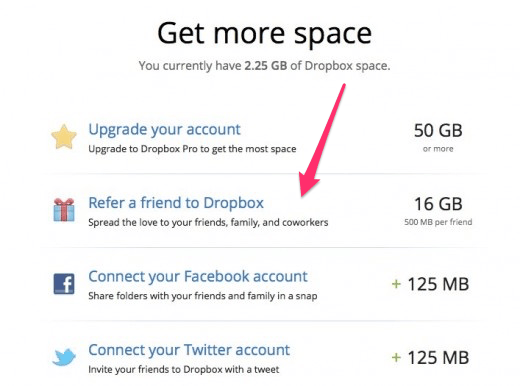
And one of the reasons it was so successful? DropBox made it possible to refer their product with virtually no effort on the referrer’s end. All they had to do was write out an email address or upload a referral code to social media. That’s it.

Genius? We think so.
If you’re not willing to give away upgrades or parts of your product for free, that’s cool. Try a discount instead.
Everybody loves discounts. If your product is subscription-based, this method of referral marketing is super simple. Offer up a certain percentage discount on a customer’s package for a set amount of time (either monthly, quarterly, or annually) in exchange for a referral.
That way, you aren’t giving away entire upgrades for free, but you’re still not losing out.
Here’s the thing about referral marketing programs: they’re only successful if you’re following up on the new prospects in your sales funnel.
The first part of doing this successfully is figuring out how to capture and qualify the leads. Using a CRM might be the answer if you want to put this on autopilot and nurture your leads as soon as they enter your sales funnel.
For example, Nutshell integrates with MailChimp, so any new referrals that come into your sales funnel can automatically be sent a welcome email.
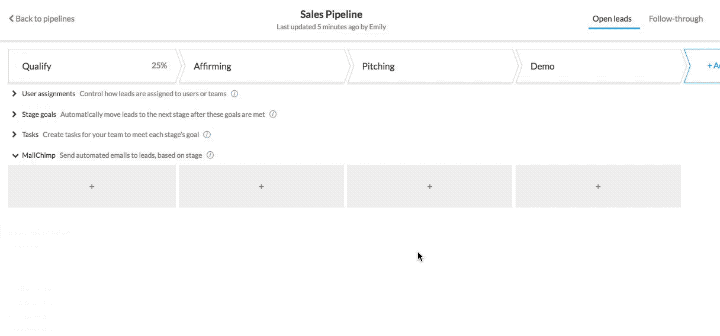
You can even segment your referral list so they are sent a custom email marketing sequence.
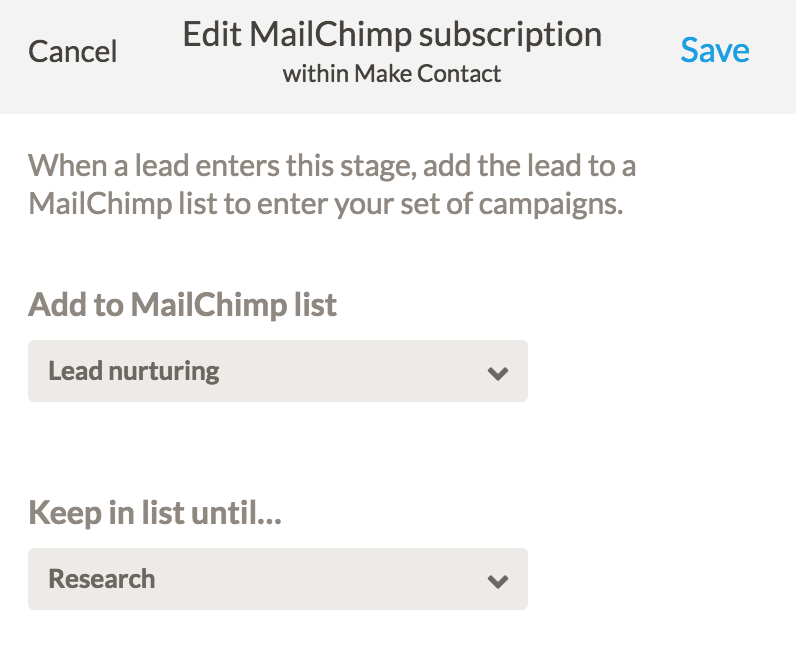
Nurturing a new lead as soon as they enter your sales funnel is crucial. If you don’t have a system in place to do this, the chances of your referral program being successful are slim.
Pro-tip: To activate your referral link, try setting up a breadcrumb trail. This technique allows a sales team to collect more in-depth information about a prospect than just a name and email address.
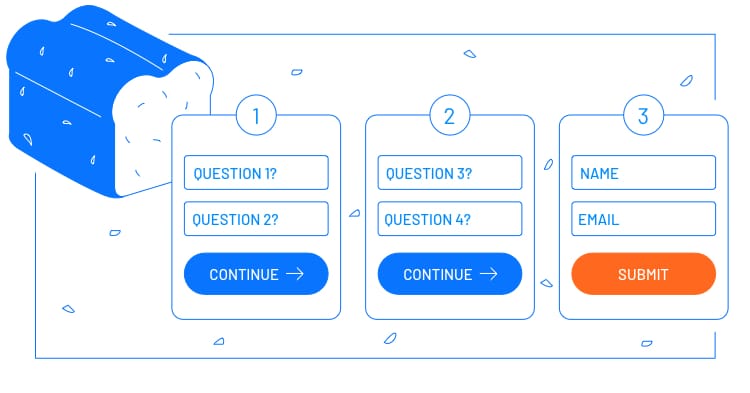
That way, your sales team will be able to follow up with the prospect more easily, as they’ll already know the prospect’s role at the company and their pain points. Boom!
Nutshell has what you’re looking for.

Would this even be a real list if we didn’t recommend you split-test your referral program? Tracking key metrics and benchmarks is crucial to the success of your referral program, especially in its early stages.
Without split testing—you’re flying blind. Your rewards might not be good enough, or your participation rate might suck. Finding out these metrics early on makes it easier to fix them.
If you’re using a referral program software like ReferralCandy, the platform automatically updates industry benchmarks and tells you if your program is up to scratch:

Not using software and building a referral program yourself? Then, you’ll need to work out what benchmarks you need to hit.
For real. Your team barely has to put any effort in because your customers are basically out there prospecting for you.
Once you set up the framework of your referral marketing program and what you’re willing to offer, all you need to do to make it successful is what you’re already doing: producing the right product and giving your customers exceptional service and support.
Once you’ve got an army of customers who love what you do, they’ll be willing to shout your brand’s name from the rooftop! (Or at least refer their friends and colleagues to your business in exchange for a reward, which is just as good).
No matter how you set up your B2B referral program, trust Nutshell to help you quickly close sales with your new leads.
With sales and email automation, custom pipeline management, and automatic lead attribution, Nutshell takes the stress out of your sales and marketing and helps you close more deals.
Try Nutshell free for 14 days. Or explore our host of other great CRM features.

Join 30,000+ other sales and marketing professionals. Subscribe to our Sell to Win newsletter!
 Email & Calendar Sync
Email & Calendar Sync
Use our calculator to add up your total investment of CRM and Add-ons
VIEW ALL PRICING
 Product Info
Product Info Education & Guides
Education & Guides Company
Company